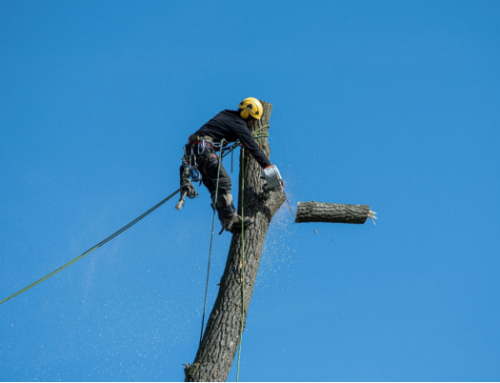Drowning Prevention & Water Safety Tips
Let’s face it, when that sun starts beating down from above, the last school bell rings, and the whistle blows for work, the first thought on everyone’s mind is: Get me in the water!
Whether your favourite way to cool down is by swimming in a lake, river, private pool, the ocean, or taking your motorboat out for a spin, it’s no question that Canadians love spending time in the water.
Unfortunately, water-related fatalities account for hundreds of Canadian deaths each year. Drowning is the third highest cause of accidental death in Canada, and the second highest cause of preventable death for children 10 and under.
But water doesn’t have to be dangerous, so long as you follow certain safety guidelines and stay aware of your surroundings. Getting the right training, and knowing how to take care of yourself and others will reduce potential risks and keep everyone safe around the water. We’ve compiled some tips to keep you safe – no matter what your go-to water activity may be.
Water Safety at the Beach
Who doesn’t love a day down at the beach? The sand in your toes, the salty spray in the air, that wily seagull eyeing up your chip stash – it’s basically bliss. But even the most relaxing outdoor settings can be hazardous to a careless fun-seeker. The ocean carries many risks, but you can stay safe by following a few simple rules.
- Mind the waves
Swimming in the ocean is very different from swimming in a lake or a pool. You’ve got unpredictable, churning surf that, while it may look relatively calm, can be surprisingly strong. Even athletic adults can be quickly overwhelmed by the ocean’s might. Keep your eyes on the waves, and don’t go out too far. You may have less control than you think.
- Understand rip currents
Rip currents are one of the most dangerous hazards for beach-goers, dragging people who wander into them out to sea. You can recognize these water channels by their deeper darker colour, movement of debris or seaweed, and fewer breaking waves than in surrounding areas. If you do get caught in a rip current, stay calm. Swim at a horizontal to the beach, not directly against the current, and once you’re out, swim back to the shore at a diagonal.
- Look out for each other
Lifeguards see a lot, but they can’t see everything. Look after your friends and family when they dive in for a swim, and know what to look for when someone is drowning. For starters, their heads may appear low and partly submerged, eyes may be closed or glassy, legs may be kicking but they’re making no headway, and their hair might be covering their eyes. Less obvious signs to be aware of: they may be unusually quiet, are unable to wave or call for help, and may not seem to be in distress at all. Check in regularly.
- Swim safely
This covers a lot of ground. Basically, be aware of your swimming abilities and where, how, and when it’s safe to swim. If you feel your swimming could be improved, take swimming lessons. Know your physical limits and be aware of fatigue, medical conditions and hydration levels before going into the water. Don’t swim while intoxicated, avoid swimming when it’s dark, and stay in sight of the lifeguard.
- Read the Signs
This goes for both beach safety signage and environmental signs. Take a look around you. Does the weather look safe for a swim? Lightning and water do not mix, especially when you’re caught in the middle. Higher winds can also mean rougher wave conditions, so check your weather station beforehand. Also keep an eye out for hazard signs on the beach itself, such as warnings for sudden drop-offs, dangerous marine life, and strong currents.
Water Safety at the Pool
The weekend has arrived and all you want to do is hang around the pool and forget your troubles, maybe even get a few laps in. Pools are a great way to let off some steam and relax, no question, but they also carry their own risks. Following water safety rules, even in your own residential pool, can greatly reduce the risk of injuries and drowning. Here’s how to keep your poolside a safe and fun environment for your whole family:
- Take swimming lessons
It may be rather obvious that the safest way to enjoy a pool is to know how to swim. Unfortunately, many people tend to overestimate their stamina, strength and skill level when it comes to swimming. Ensuring that you and your children are equipped with the right training to enjoy water safely, and that you know when to call it quits for the day, should be a high priority.
- Watch children at all times
Backyard pools are, in fact, one of the most likely places for children under 5 years old to drown. Even water less than 1 meter deep can pose a threat for kids with limited swimming abilities, so make sure they do not wind up near the pool by accident. According to the Lifesaver Society, while 61% of deaths for children 5 and under were alone near water, 53% of these occurred only during a momentary absence or lapse of a caregiver’s attention. Many assume they would hear shouting or splashing, but unfortunately, many drownings are completely silent. Be sure to have eyes on young children at all times and remain within reach.
- Learn CPR and first aid
When it comes to your own personal pool, the lifeguard on duty is YOU. Knowing how to perform CPR on both children and adults is incredibly important, as professional help may not arrive fast enough to respond. Understanding the basics of life-saving CPR and first aid while also keeping your skills up-to-date could prevent a worst case scenario. For your own safety, make sure someone else within your home also has proper training.
- Equip your pool with safety gear
For poolside injuries and emergencies, have a first aid kit, floatation devices, and a phone close by at all times. To avoid accidental child drownings, have a gate put up between the house and pool (even better if the gate is self-closing and/or self-locking). If you have a back door that leads out to the pool, it’s also paramount that you keep it child-locked. Installing lockable safety covers and alarms for your pool can also help.
- Enforce family pool rules
Create a checklist for the whole family to follow when they’re making use of the pool. Some rules to consider include:
- No running, diving or rough-housing near the water
- No swimming alone
- No glass or sharp, breakable objects in the pool area
- Allow time after eating before swimming, etc.
Make sure everyone is on board and follows the rules accordingly.
Water Safety on a Boat
Ready for another statistic? Nearly one third of all water-related deaths take place while boating. That’s a huge amount, and unfortunately, many of these losses could be prevented by following just a few basic boating safety principles.
- Get trained and certified
In Canada, anyone operating a motorized boat must hold a Pleasure Craft Operator Card (PCOC). More than 70% of boating incidents are due to operational errors, many of which could be avoided with proper training. Learn how to safely operate and navigate a boat, for both you and your passengers’ sake. Taking additional swimming and boating lessons can also reduce the likelihood of drowning, injuries, and other accidents.
- Always wear a life jacket
We know you’ve probably heard this little rule a thousand times, but it’s still worth another shout. The majority of those who die in boating deaths were not wearing a personal flotation device or life jacket. Wearing one might feel cumbersome, but it can make the difference between staying alive and becoming a statistic.
Quick Tip: “Life jackets for adults are not suitable for children. They should fit snug and not allow the chin or ears to slip through.”
- Pay attention to weather
Before you head out, make sure to check your local weather forecast for any severe conditions throughout the day. Look around. Near or distant dark clouds, strong and chaotic winds, and sudden temperature drops are all signs to be aware of. Know what’s coming before heading onto the water.
- Avoid alcohol
According to the Lifesaving Society, roughly 40% of drowning fatalities from recreational boating in Canada are alcohol-related. You wouldn’t drink and drive a motor vehicle, would you? Driving a motorboat under the influence carries similar risks. Impaired vision and decision-making coupled with a fast, heavy, and potentially dangerous vehicle is never a good idea.
- Mind your health
Boating can be a strenuous pastime, especially when you’re spending all day in the hot sun. Fatigue and heat illnesses can be dangerous when mixed with driving a boat or swimming. Make sure you bring plenty of water to stay hydrated, wear protective clothing, and don’t push yourself past your limit. Most accidents happen when fatigue sets in.
CPR– Simple Steps to Saving a Life
When someone is near-drowning, one of the most valuable skills to know is CPR (cardio-pulmonary resuscitation) . Even if you are able to pull someone out of the water in time, they may have too much water filling their lungs to breathe properly. Knowing how to clear airways using CPR could save a life.
If you have determined that a person is unconscious and not breathing, you need to begin CPR immediately. Push hard and push fast, starting the cycle of 30 compressions to two ventilations. Make sure the mouth is clear of debris and have someone call for help immediately.
Metro Safety Training – Equipping People with CPR
CPR can be given by all levels of trained medical personnel, but most importantly, you can provide it if you’ve received CPR training. You don’t need medical equipment — at minimum, just some know-how and your hands. Metro Safety Training offers a wide range of First Aid and CPR courses to help people like you save lives at work, home and play.
With these water safety tips in mind, you can feel confident next time you and your family are out enjoying a sunny day on the waves or the poolside. No one wants a catastrophe during leisure time, so play safe, know the hazards, and have fun!





